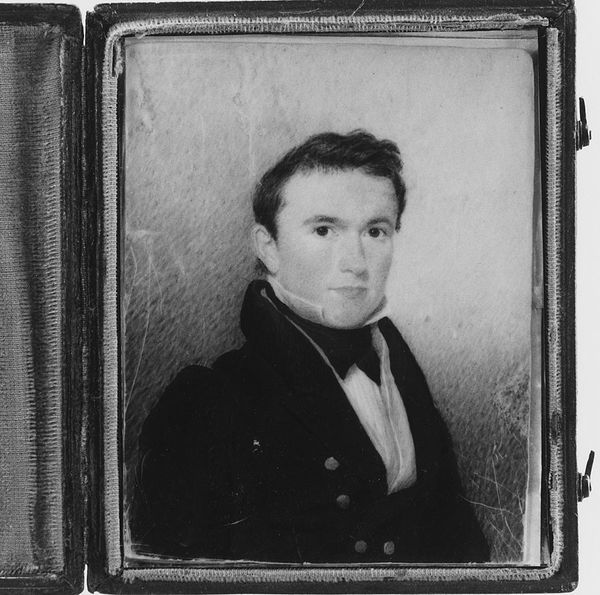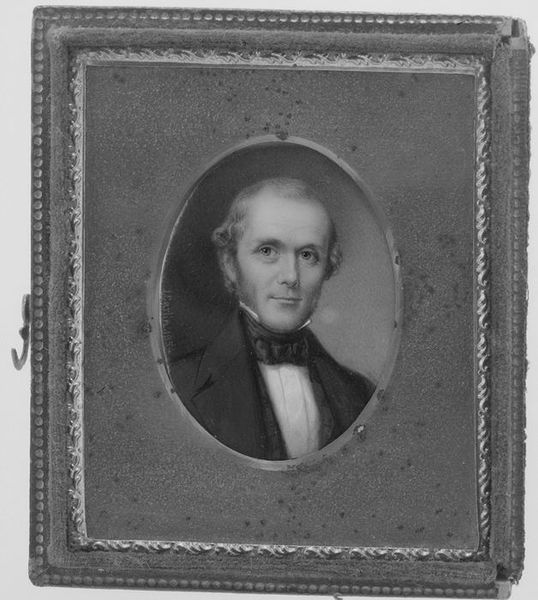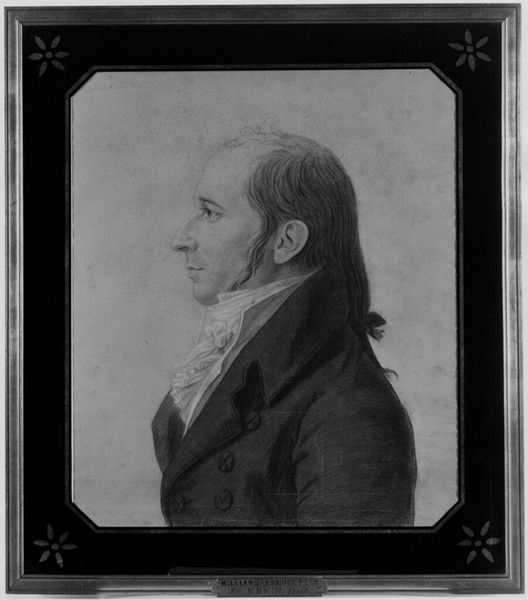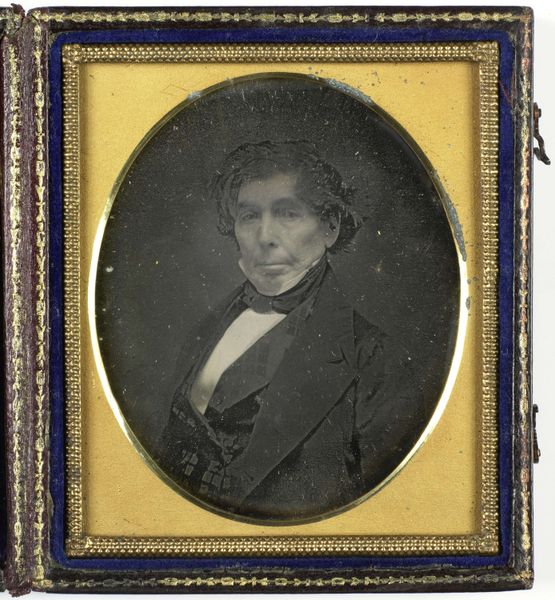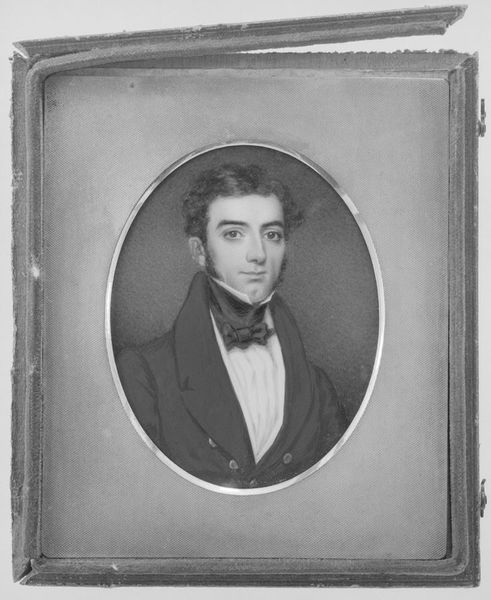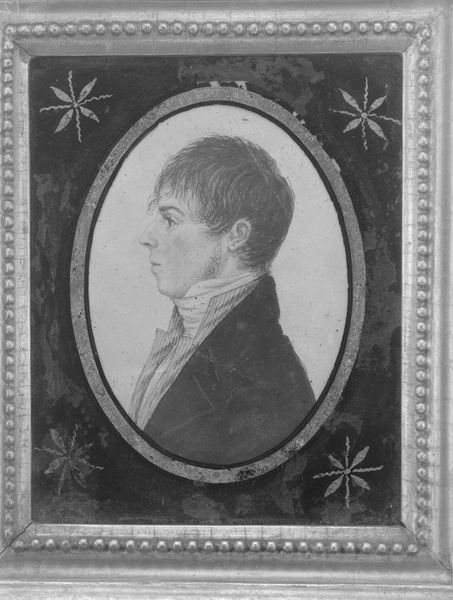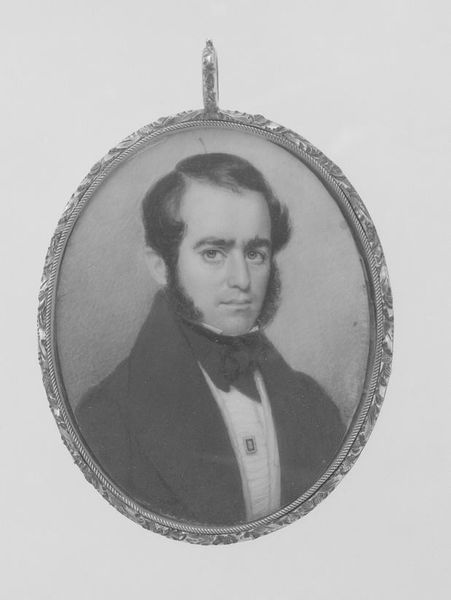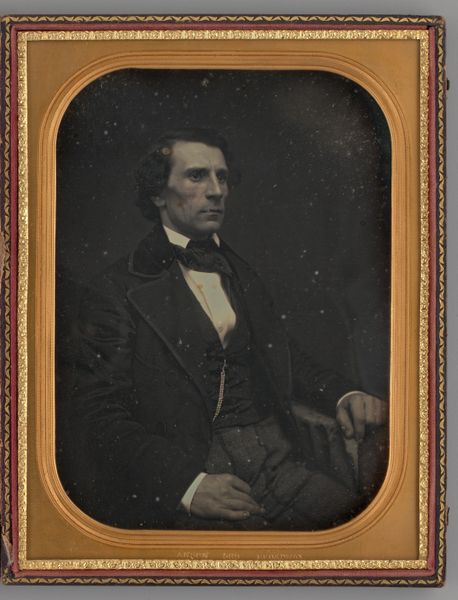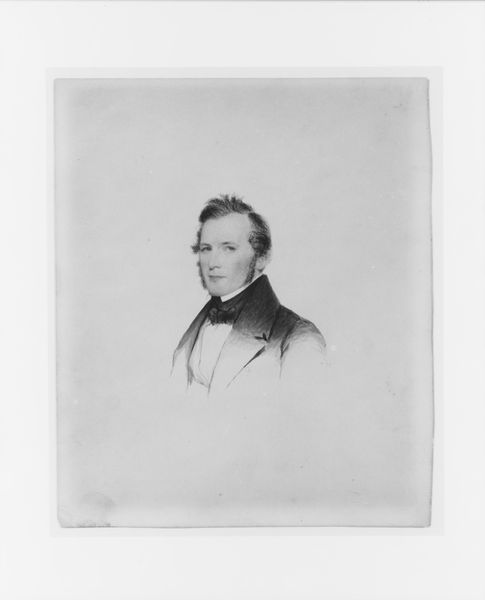
drawing, graphite
#
portrait
#
drawing
#
portrait
#
monochrome photography
#
graphite
#
academic-art
#
realism
#
monochrome
Dimensions: 3 1/8 x 2 9/16 in. (7.9 x 6.5 cm)
Copyright: Public Domain
Curator: Hmm, I immediately sense such stillness. Look at his gaze; almost melancholic, definitely lost in thought. Editor: Well, here we have "Thomas Dillard," a graphite drawing from 1834. The artist is Jean Christophe Alexandre. It’s a classic example of the period’s interest in portraiture. Currently residing at The Met. Curator: Ah, graphite. Gives it that hazy, almost dreamlike quality. I wonder what he was pondering as Alexandre sketched away. Was it matters of the heart, philosophical debates, or perhaps…the price of wool? Editor: I suspect matters of social standing and posterity might have weighed on his mind more heavily. Portraiture in this era was a significant tool for constructing identity and projecting an image of respectability. Being rendered in graphite was less expensive than a full oil painting, democratizing the field somewhat, though still accessible primarily to middle and upper classes. Curator: You know, it's funny. I look at him, and I feel almost a sense of familiarity. It's strange how art can make the past feel so present. Graphite, of course, being wonderfully suited to capturing these fine details... those tiny whiskers and the folds of the fabric…almost photographic in their realism. Editor: Absolutely, the level of detail speaks to the conventions of academic art at that time. Notice how the oval frame focuses our attention directly on his face, centralizing the sitter within the social gaze and solidifying the narrative surrounding the subjects position within a socio-political class. This portrait really echoes a desire to be remembered, to leave a mark. Curator: To become, you could say, a ghost in the machine. Editor: Precisely, a controlled projection of self preserved within the institution of art. Curator: Isn't it funny how a simple drawing can hold so many stories? It is a stark reminder, I suppose, of our shared humanity through the ages. Editor: It also reveals art's entanglement within socio-political projects of memory and power. An important testament to art’s function, especially during that period.
Comments
No comments
Be the first to comment and join the conversation on the ultimate creative platform.
